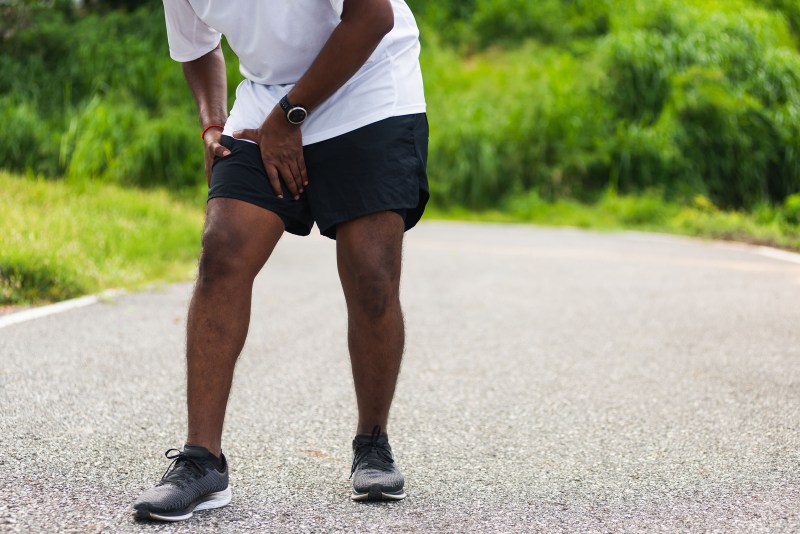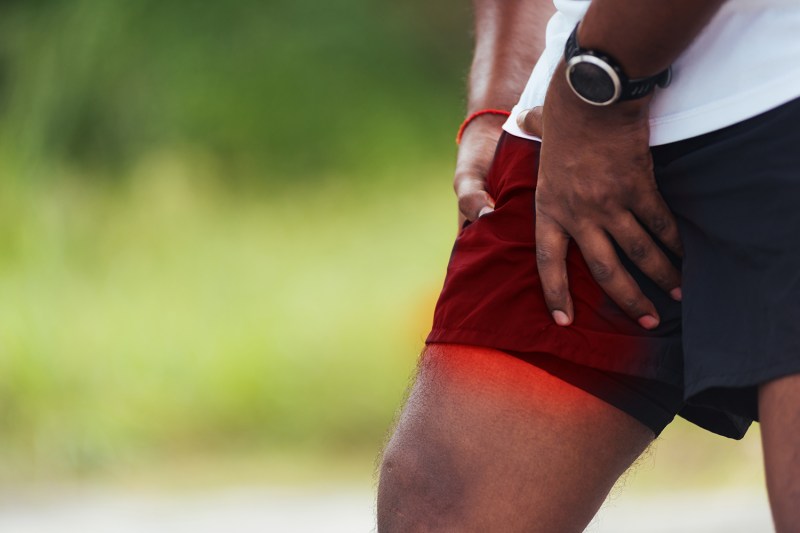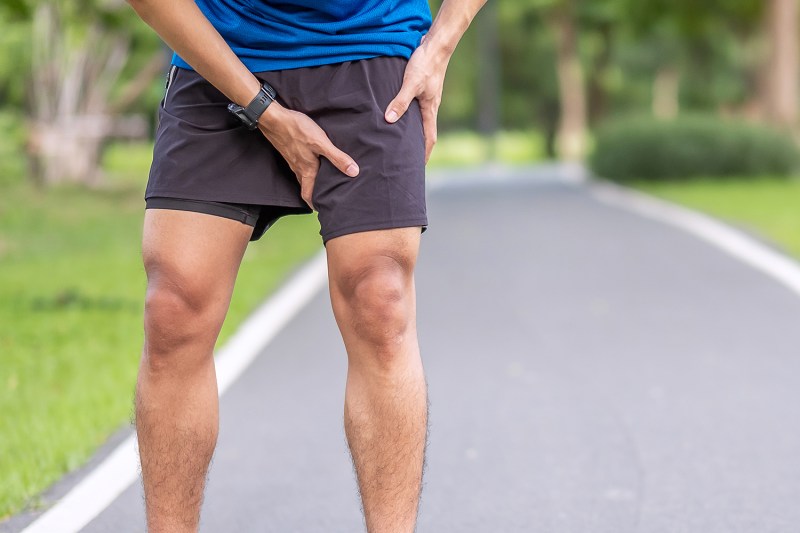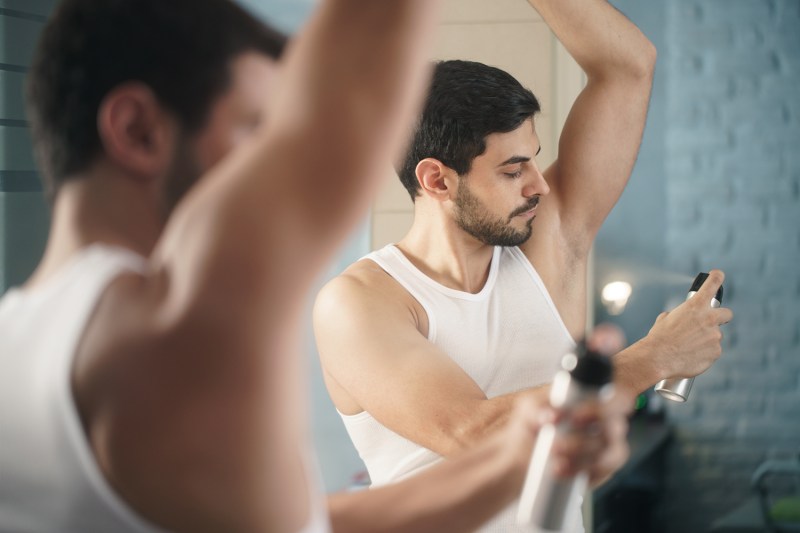
Chafing is a runner’s Achilles’ heel. Nothing will make you want to quit faster than when your skin is red and rubbed raw, making it feel as though, with every stride, you’re creating a new wound. Depending on how far away you are from your starting location when you start to feel that burn, it’s like death by a thousand cuts.
It happens to new runners, marathon enthusiasts, and everyone in between — but it doesn’t have to be that way. Whether your favorite workout shirt’s seams rub your armpits or your thighs brush against each other, there are steps you can take to prevent chafing. With a little prep and the right fitness gear, your skin will love your long runs just as much as your easy jogs when you learn how to stop chafing.

What causes chafing
The main culprit for chafing is friction. When your skin rubs against itself or scrapes your clothes over and over again, this repetitive movement causes peeling, blisters, or rashes. Add sweat to the mix and you’ve got the ideal conditions for major hot spots. The kind that causes serious pain between your thighs, the groin area, armpits or nipples.
Chafing can happen anywhere, at any time. Even if you’re just going on an easy jog or a short run, humidity and fabrics can play tricks on you. This is especially true if your skin’s already sensitive or you’re wearing new running clothes.
As with all exercise injuries, prevention is the best course of action, and chafing is not the exception. Staying hydrated (with a good insulated water bottle) while you run lowers the salt concentration in your sweat and helps prevent friction. Remember that the harder you work, the more water your body needs. Proper water intake and extra care in the areas that are prone to chafing are the best ways to avoid these uncomfortable skin irritations.
Since you never know where chafing may hit, it’s always best to prep your skin before you head out for a run. Just like with sunblock, you want to apply lubricating products to all the problem areas as you head out the door. And on long runs, don’t hesitate to reapply halfway through.
For men, these hot spots tend to be between the thighs, around the groin area, the armpits and the nipples. Anti-chafe bars, dusting powders, and salves create a protective layer that covers your skin and keeps chafing away.

How to prevent chafing while running
Thighs chafing: Running tights work wonders for active guys who chafe between their thighs. If you’re not a fan of the Robin Hood look, reach for bike shorts and wear them under traditional running shorts. Whichever of the two you prefer, make sure your running bottoms are made from breathable materials that protect the skin around your inner thighs.
Groin chafing: If you’re chafing in the groin area, it could be a sign that your underwear doesn’t offer enough support. Chafing can also happen when your underwear is made of the wrong materials. To prevent chafing in that sensitive region, avoid cotton underwear and make sure your undergarments offer a good fit. With running underwear for active men, you’ll avoid the discomfort of bagginess and fabric rubbing against your skin.
Armpit chafing: When it comes to running shirts, the safest choices are tag-less and seamless tees. Make sure that your shirts are made of synthetic fabrics that wick away the sweat and let your skin breathe during your runs. You also don’t want them to be too tight or too loose. A running shirt that fits just right keeps your underarms fresh and prevents armpit irritations caused by the seams in your sleeves.
Nipple chafing: Nipple chafing is real and it can even leave you with blood on your shirt. To avoid this unpleasant soreness that even hurts when you take a shower, give protective bandages a try. Designed to stay on while you run, these convenient products don’t let your shirt rub against your nipples. Best of all, they don’t hurt when you peel them off.

How to treat chafing
If you’re already dealing with the discomfort of chafing, there’s a lot you can do to make it better ASAP. A good place to start is by taking a fresh shower that removes any salt on your skin. Avoid hot water while the skin is still sensitive and use a gentle soap to prevent stinging. Pat the skin dry and let it breathe a little before applying products.
If the pain is still bad, consider applying an ice pack. This will numb the soreness and make it easier for you to apply healing products. As with the shower, the key is to pat the skin dry instead of rubbing.
Once the chafed area is clean, treat the redness with diaper rash cream. This will deliver immediate comfort and moisture absorption. If you prefer natural products, aloe vera or coconut oil are effective alternatives that heal the skin and reduce inflammation. Just be sure not to apply any of these products to broken skin.
After treating your chafed area, give your skin a break for a couple of days and allow it to heal. If chafing was caused by your clothes, make sure you wear tees and bottoms designed for runners. These will help prevent future chafing and keep you comfortable during your workouts.
If chafing doesn’t improve in a few days or gets worse, don’t hesitate to call your doctor. Bleeding, discoloration, swelling and crusting could be signs of an infection that requires medical treatment. Plus, checking in with your doctor could also help prevent future cases of severe chafing.

Can deodorant prevent chafing?
Wearing deodorant and antiperspirant can help prevent chafing while you run — even in areas other than your underarms. By helping your skin stay drier, a good antiperspirant prevents irritations caused by sweat. Deodorant also acts as a lubricant that soothes the skin and reduces friction. If you have delicate skin that chafes easily, choose a deodorant for sensitive skin or a natural brand made with organic ingredients.
Does baby powder stop chafing?
Baby powder or petroleum jelly can offer some relief when it comes to combating chafing. You can apply it beforehand as a preventative or use it to treat chafing, as it can also soothe. Baby powder can be effective in that it slurps up excess moisture (aka sweat), thus minimizing any painful friction that can happen when on the move. Try it out first, as it doesn’t work for everybody. Baby powder can dry an area out so much that it can actually irritate the skin (plus create an annoying white patch). We suggest trying a small amount and potentially going with one of the above methods instead.
Thinking about getting into the sport? Check out our guide on how to start running to get you motivated. Lace ’em up and get going, without unnecessary pain.



